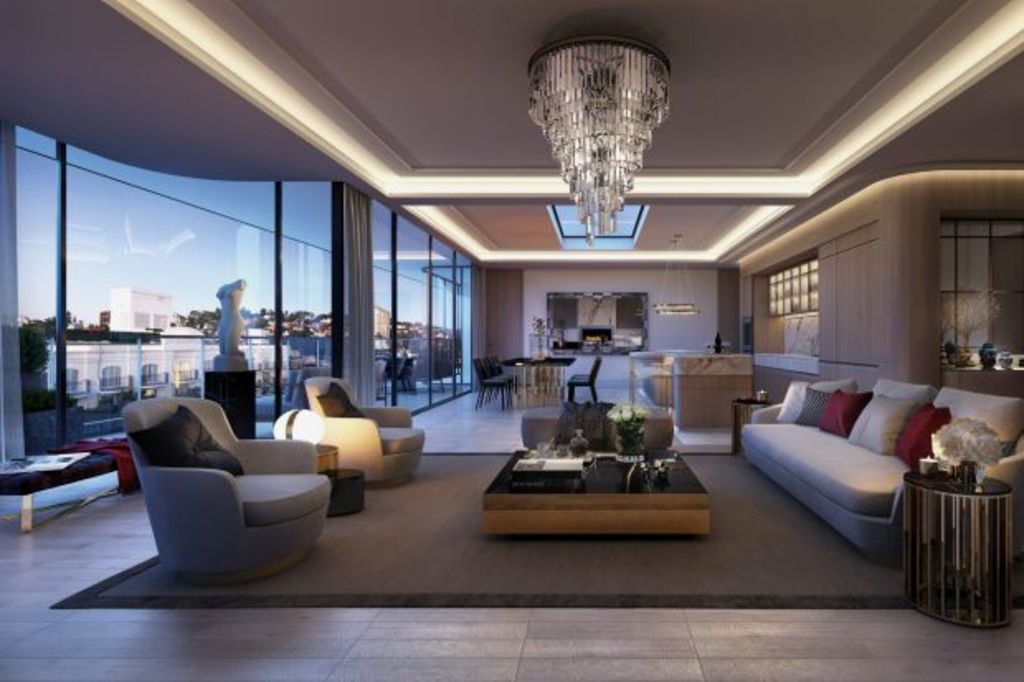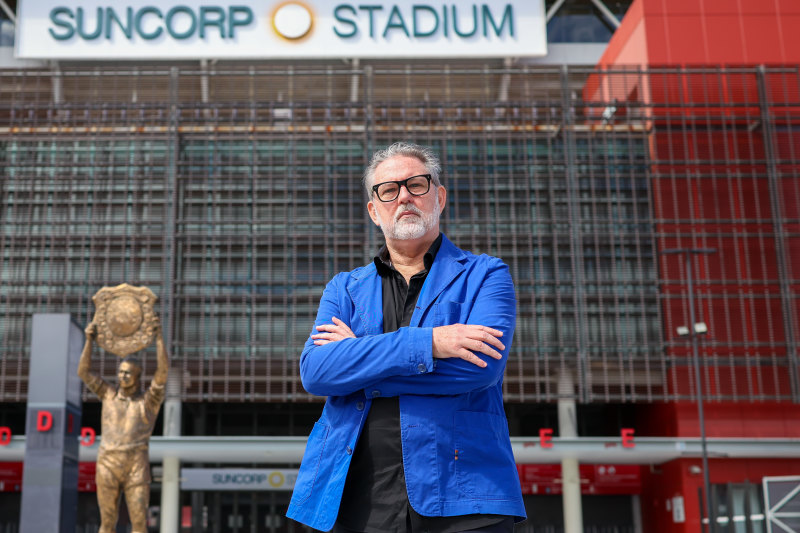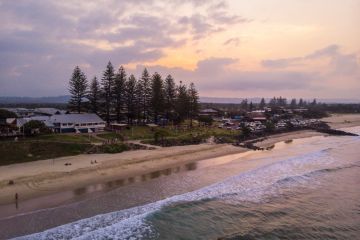$100 million Double Bay development 1788 Residences zeroes in on Sydney downsizers

Downsizing is a time for new beginnings: for ditching the lawnmower, doing away with dusting rarely used rooms and finally convincing adult children to get rid of all their stuff.
More than that, it’s a chance to create a new home, possibly in a new suburb, with features to last for years to come.
A new apartment development in Double Bay village has the downsizer market firmly in its sights.
The $100 million project from developer SJD Property, 1788 Residences, will start VIP sales on August 26.
The project offers 31 apartments over five levels above ground-floor retail space. Bates Smart has designed both the architecture and interiors.
The building’s sculpted form draws on the European heritage and boutique culture of the village, evoking the luxury and glamour of the 1920s through its soft, curvilinear forms.
Ben Stewart, a director of CBRE, the agency marketing the project, says there’s a huge amount of pent-up demand for homes in the heart of Double Bay, where there hasn’t been a new luxury apartment development for years.
He predicts most buyers will be downsizing from homes within five kilometres of the village.
- Related: How wealthy young buyers discovered Double Bay
- Related: Rise of elite downsizers inspires new trend
- Related: Why would-be downsizers stay in Waverton
“There are divorcees, widows and people whose lifestyles have changed,” Stewart says. “Their children have left and might be having children of their own. They want to be close to their grandchildren. There will be buyers in their 50s who want to travel three or four times a year, so they want a low-maintenance home.”
Across Sydney, empty-nesters are one of the most frequently name-checked target buyer groups for new apartment projects.
But what exactly makes a home ideal for downsizers, not only for the years when they’re fit and healthy enough to criss-cross the world in search of adventure, but in the period after that?
Dr Phillippa Carnemolla, a postdoctoral research fellow in the faculty of design architecture and building at the University of Technology Sydney, who wasn’t involved in this project, says downsizing is much more than a chance to throw away the lawnmower.
“It is an opportunity to consider how the design and location of a new place to live will impact on our wellbeing, independence, social connection and quality of life, for the rest of our life,” Carnemolla says.
Her phD research, which studied Australians with an average age of 72, showed a clear link between housing features and the level of in-home support required. Improving certain aspects of home design nearly halved the amount of care provided.
“For the ‘young-old’ buyers, aged 50 to 60, the decision to downsize may be less likely to be about levels of independence and care, because we don’t like to think too far ahead to times of poorer mobility and health,” Carnemolla says.
Instead, buyers in this age bracket usually focus on lifestyle drawcards such as location and connection to cultural interests, family and friends.
“These are very important aspects of a good life, regardless of age. But these are also aspects that can be lost when we are forced to move house later in life as health declines.”
Her research identified several critical design features for people looking for a home in which to “age in place”.

Finishes used in the apartments include crown-cut oak and herringbone timber floors.
Photo: Artist’s impression
Improving bathroom design, using non-slip tiles and flat shower access, for example, resulted in the greatest improvements in independence and confidence.
Next on the list: ensuring a home’s entrance and exit were easily and safely accessible.
Having an interior layout that allowed occupants to move through the home with ease was also important, followed by the location and surrounding urban infrastructure.
“My research shows that, if we are choosing a home for life, it is important to think about good design not just for now, but for future decades,” Carnemolla says.
“The research also revealed that beyond reducing care, good design can change relationships by restoring independence, dignity and even enabling people to remain active in the community.”

The kitchens are fitted with Wolf appliances.
Photo: Artist’s impression
Double Bay is one of the eastern suburbs’ leading lights. One of the most fashionable Sydney suburbs throughout the 1900s, it had lost some of its sparkle by the early 2000s.
Like Woollahra and Paddington, it experienced a huge downturn in trade when Westfield Bondi Junction opened in 2004.
A development push during the past five years has revitalised the village, especially around Kiaora Lane. There’s now a shiny new Woolworths – complete with cheese room – as well as a new library, a fresh crop of restaurants, cafes, bars and boutiques, along with one of Sydney’s hippest rooftop bars atop the Intercontinental Hotel and plans for a cinema.
All this, and Double Bay is just five kilometres from the Sydney CBD, one kilometre from Edgecliff station and has its own ferry terminal with services to the city and Watsons Bay.

The building was designed to evoke the luxury and glamour of the 1920s.
Photo: Artist’s impression
Interior designer Brenton Smith, a director of Bates Smart, says 1788 Residences is designed to respond to a sophisticated market. “At this end of the market, buyers looking at high-end apartments have moved out of spacious houses with large grounds in affluent suburbs,” Smith says.
“They’re often looking for lifestyle living in well-connected areas near good restaurants, shops and leisure activities.
“They are very exacting and experienced purchasers and this may be their final residence.
As a result, the offer is not just about the apartment itself but the amenity that often comes with the building.”

The bedrooms have walk-in or walk-through wardrobes. Photo: Artist’s impression
At 1788 Residences, understated luxury reigns. Horizontal brick ribbons wrap the facade. Pale bronze louvres follow these sinuous lines, helping fine-tune solar exposure while creating privacy screens for residents.
A zinc roof is a nod to grand European apartment traditions. Marble finishes and crystal chandeliers create a dramatic entrance in private lobbies.
The homes have generous north-facing balconies. Marble-framed fireplaces deliver warmth and atmosphere, and the kitchens are fitted with Wolf appliances. Bedrooms have walk-in or walk-through wardrobes, and the apartments all feature ample storage.
Other finishes include bronze, antique-look nickel, crown-cut oak and herringbone timber floors.
Ben Stewart says the apartments, with “inclusions like you’d see in a $50 million home at Point Piper”, are perfect for downsizers.
“Everything is at your doorstep,” he says. “You can walk out of your home and get your shopping done, get your hair done, eat, drink, catch a ferry to the city or Watsons Bay.
“You’re amongst it all. You don’t even need to leave Double Bay.”
We recommend
States
Capital Cities
Capital Cities - Rentals
Popular Areas
Allhomes
More







